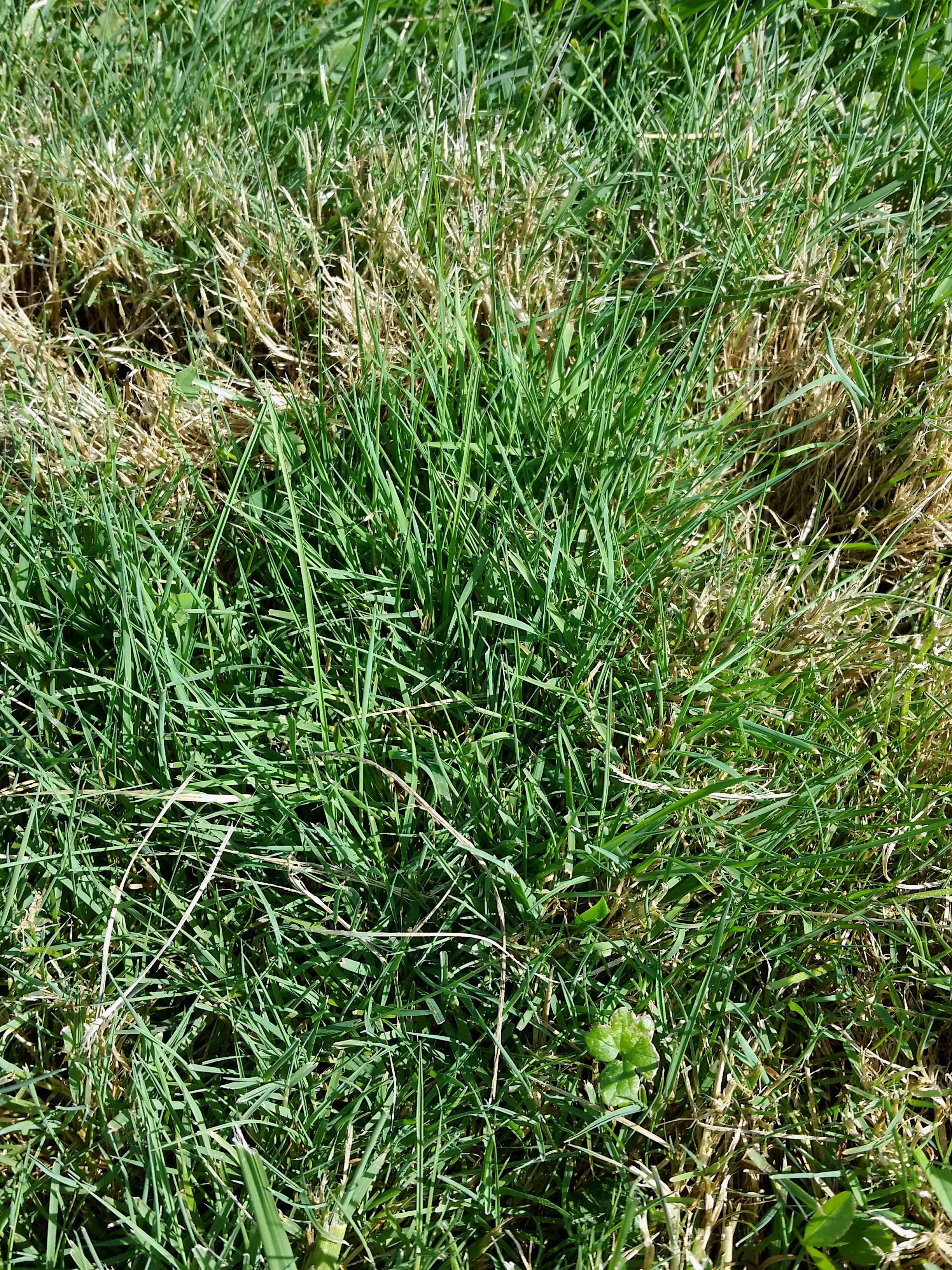Fescue

Fescue
Tall fescue is a low-maintenance grass with a signature bunch-forming growth pattern that rarely requires dethatching. Fescue's deep roots are efficient in drawing nutrients out of your soil, and as a result, the grass typically requires less fertilizer than other cool-season grasses.
Is fescue an aggressive grass?
It is an aggressive, sod-forming grass that creates a thick, matted condition which severely limits the movement and foraging ability of ground-nesting and ground-feeding wildlife. Tall fescue is also allelopathic.
Does fescue come up every year?
Tall fescue is a perennial, so it will come back year after year. It's often used in lawns because it's very tolerant of heat and drought. There are several tall fescue varieties, but most tall fescue lawns need to be mowed about once a week during the growing season.
What is a fescue lawn?
Fescue is a variety of grass that can grow in low fertility soil and works well for lawns and pastures. Tall fescue is the most popular variety because it can thrive in different types of soils and temperatures. The grass can withstand a range of temperatures and of Southern California.
What are the pros and cons of fescue grass?
Pros: Fine fescue grows well in acidic soils, as well as in dry and shady conditions. It is the most drought- and shade-tolerant of cool season grasses. Considered low-maintenance, it doesn't require much fertilizer. Cons: Fine fescue needs well-drained soil and does not stand up well to heat or heavy wear.
Does mowing fescue help it spread?
It looks nice, it feels nice, and it will keep the weeds out on its own, making your maintenance work easier! But your lawn is patchy and you wonder how to get your grass to spread? Cutting grass will encourage it to spread.
What is the lifespan of fescue grass?
It is the rhizomes from the bluegrass that hold the sod together and keep it from falling apart. Overseeding is important with tall fescue. A blade of grass only lives an average of 40 days before it dies.
Why do people not like tall fescue?
Tall Fescue is toxic to just about anything that eats it. Google it. It's toxic to dairy cows, beef cows, horses, sheep, goats, birds, grasshoppers, ants and even nematodes. It also cuts down on biodiversity because it takes up space that native biota could have occupied and it's aggressive.
Which is better grass Bermuda or fescue?
Bermuda grass varieties tend to do well in the heat, while Fescue does not. Bermuda also tolerates drought better than Fescue, and that's important to us due to the weather in recent years! A lower water requirement can also save you a bit of money on your water bill. Sunlight and shade.
Should fescue be cut back in the fall?
In climates where blue fescue is evergreen, you don't need to cut them back in the spring. Everywhere else, the plants should be sheared back to a few inches from the ground to allow plenty of room for fresh new foliage to grow. Unfortunately, blue fescue can be a fairly short-lived perennial.
What month should I seed fescue?
Fescues are a cool-season grass, so it's best to plant its seed in early fall between mid-August and mid-October when outdoor temperatures average around 70° to 75°F. This way, the young seeds will experience less heat, stress, and disease.
How long does it take fescue to establish?
In general, plant tall fescue at least 45 days before your region's typical first fall frost date. This allows time for the 7- to 21-day germination period for turf-type tall fescue plus adequate time for roots to establish before winter comes. For Upper Midwest lawns, mid-August may bring ideal conditions.
Is fescue a good yard grass?
Tall fescue is valued for its adaptability to a wide range of climates and its tolerances for cold, heat, drought and shade. In its preferred growing zones, tall fescue provides lawn owners with outstanding options for improving lawn resilience and durability.
Does fescue stay green in winter?
Unlike warm-season grasses, a fescue lawn does stay green in the winter. It also has a good shade tolerance. Fescue can be maintained taller than other grass types for a thick, lush lawn.
Does fescue grass survive winter?
Winter Care For Fescue Lawns. As a cool-season grass, Fescue stops top growth during the cold winter months. However, the turf's roots continue growing and storing carbohydrates for the next spring and summer's growth period.
Should you overseed fescue every year?
In order to maintain a healthy fescue lawn year round, it's important to aerate and seed once per year, and now is the time. Because fescue is a cool season grass, September and October are perfect months to core aerate and overseed your lawn.
Should I water fescue grass every day?
Fescue has a deep root system, but it will discolor, thin, and eventually die under drought conditions. In general, a fescue lawn will need about an inch of water every 7-10 days, whether from rain or irrigation. Try to water deeply and infrequently.
Can you put too much fescue seed down?
Too much grass seed causes undue competition for resources such as light, water and nutrients, and grass seedlings struggle as a result. Too little seed leaves lawns thin or bare.
Why you shouldn't mow your lawn every week?
Even if you're performing weekly mowing, if you're cutting the grass too short, it could still turn yellow from stress. When you mow too short, you also invite weeds into your lawn. Opportunistic weeds are much more likely to invade weakened lawns, than dense and thriving ones.
Does putting grass clippings on bare spots help grass grow?
Simply put, grass clippings are good for lawns because they turn into natural fertilizer. Clippings contain the same things as the rest of your grass – including water and the nutrients (especially nitrogen) that your lawn needs to stay healthy.










Post a Comment for "Fescue "